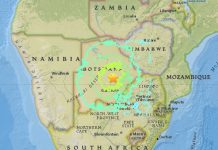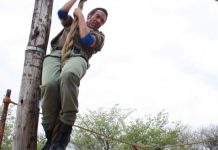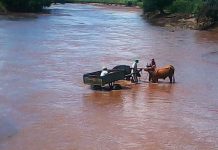From 2012 to 2016, at least 97 people died of wild animal attacks in the Marromeu Marromeu Complex, with its buffalo reserve, and adjoining Muanza and Cheringoma districts, where no less than 450 cases of human-animal conflict were reported.
The figure emerged yesterday during the third session of the region’s Management Council in Cheringoma, where Domingos Alfândega, director of Cheringoma District Economic Services, said that in the three districts, at least 133.06 hectares of crops were destroyed.
He noted that hunting and fishing on the Zambezi River by members of the communities who settled in the complex’s vicinity were the main occasion of the incidents.
Alfândega said that deaths were declining as a result of government authorities in Sofala implementing various measures to raise awareness of the wildlife habitat, the slaughter of animals, and the collection and buying of crocodile eggs.
He said that deaths due to crocodile attacks rose to 17 in 2015, possibly as a result of drought, which forced the communities, especially in Marromeu, to resort to the Zambezi River borders in their search of fertile land for agriculture.
Domingos Alfândega said that the culling of buffalo and elephants to prevent the destruction of crops is failing for lack of ammunition, which is supposed to be provided by the Provincial Directorate for Environment, Land and Rural Development.
- The Marromeu Complex (11,270 km²) covers the southern half of the Zambezi Delta and the adjacent Cheringoma escarpment, and includes the Marromeu Buffalo Reserve (Reserva Especial de Marromeu) and two forest reserves (Reserva Floresta de Nhampacué and R.F. de Inhamitanga), four hunting concessions (Coutada Oficial no. 10, 11, 12, and 14), large commercial agricultural lands (notably the Sena Estates, the largest sugar plantation in Mozambique), and community lands. In November 2003, the Government of Mozambique ratified the Ramsar Convention and designated the Marromeu Complex as the country’s first and only Wetland of International Importance because of its vast size and immense value for biodiversity, ecosystem services, and human livelihoods.









